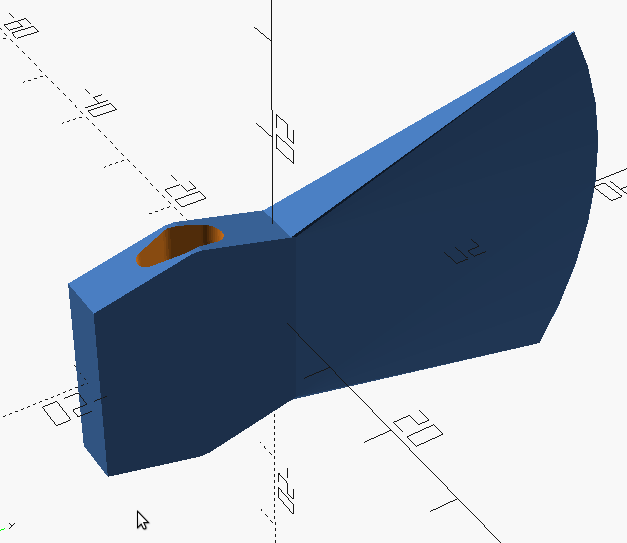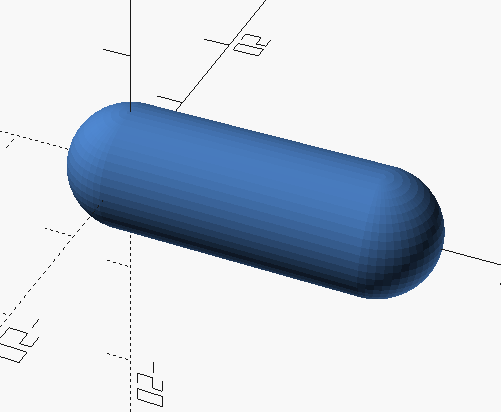hull() is a simple command to use, merely place whatever objects from which you want to form a hull as children of the command. The hull command() merges the outermost bits to form a single object. ( It is really a bit magical to me ).
It is one of those commands that I personal don’t find a lot of use for, but here and there I find ways it can make life easier.
For example:
Two sphere’s and a hull give us this pill shape:
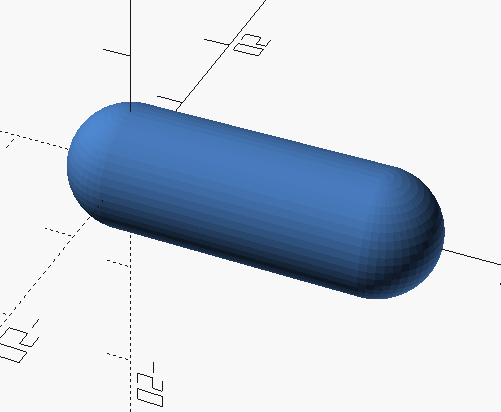
hull(){
sphere(r=5,$fn=50);
translate( [20,0,0] ) sphere(r=5,$fn=50);
}
Just for this article I made this Axe Head using hull and a few other commands. Don’t ask why, it just popped into my head. Is is a little more “Low Poly” than I wanted but it was interesting how easily I was able to complete it.
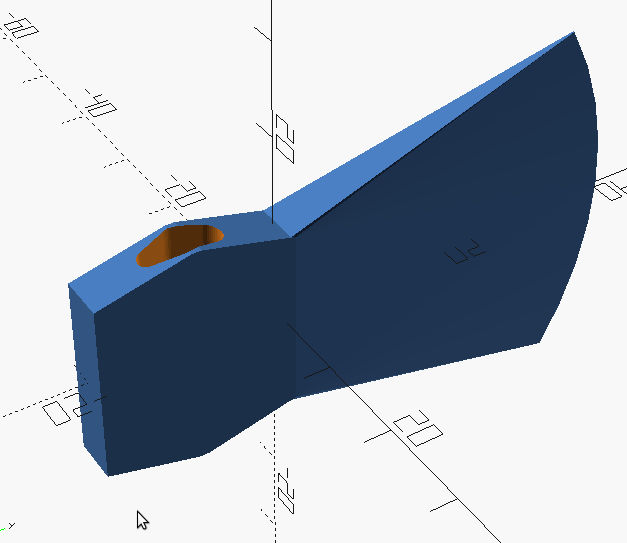
Here is the code I used:
One of the concepts this code highlight s is that hull() works on both 2D Object and 3d Objects
rotate([-90,0,0]){
hull() {
linear_extrude(1)
square([5,20],center=true);
rotate([30,0,0])
rotate([0,-90,0])
rotate_extrude(angle=60,$fn=50)
translate([40,0] )
circle(.1,$fn=50);
}
difference() {
union() {
hull(){
translate([0,0,-20])
linear_extrude(1)
square([5,20],center=true);
translate([0,0,-10])
linear_extrude(1)
square([5,25],center=true);
}
hull(){
translate([0,0,-10])
linear_extrude(1)
square([5,25],center=true);
linear_extrude(1)
square([5,20],center=true);
}
}
translate([0,50,-10])
rotate([90,0,0])
linear_extrude(){
hull($fn=50){
translate ([0,0]) circle(r=2);
translate ([0,3]) circle(r=1.5);
translate ([0,-3]) circle(r=1.2);
}
}
}
}2d vs. 3d Hull
the hull command coan be used in the 2d sub-system or the 3d system
2D Hull
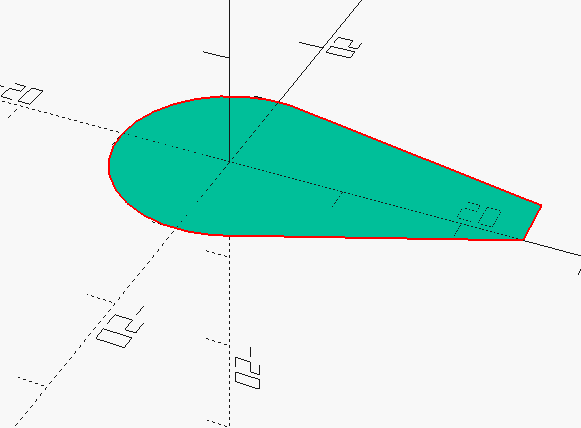
3d Hull
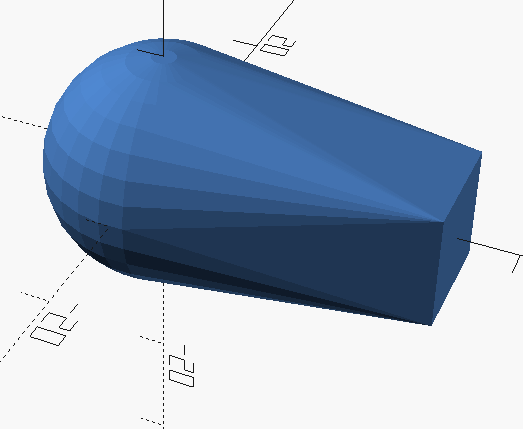
hull to make a simple cam, using cylinder.
Before hull()
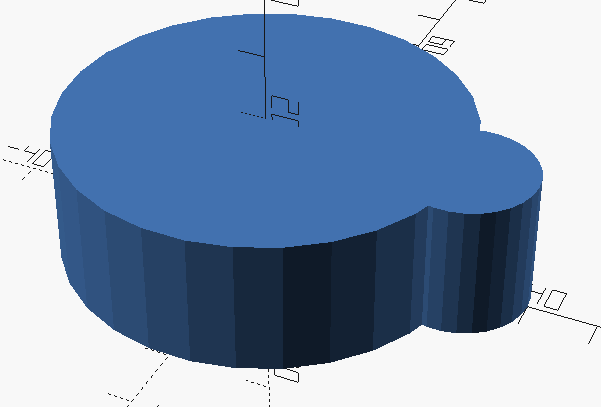
After hull()
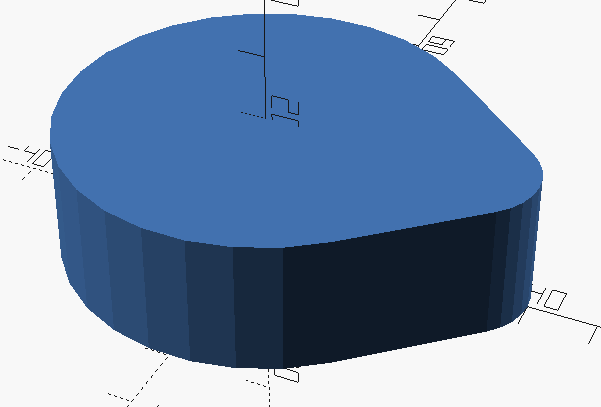
Simple code for this cam:
CAM_OFFSET=30;
hull(){
cylinder(h=20,r=30);
translate([CAM_OFFSET,0,0])
cylinder(h=20,r=10);
}Hopefully this gives you some ideas on what to use hull() for, I will keep looking looking for some best use case.

